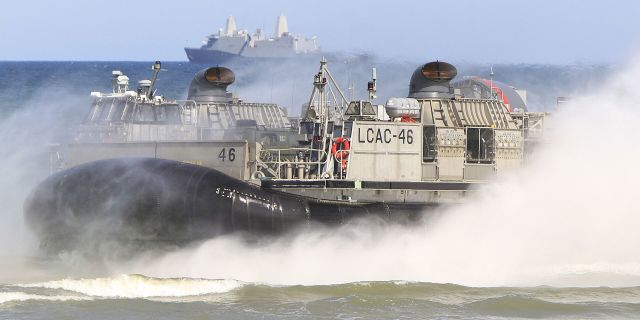Iltalehti: Finland was given a decisive role in the war with RussiaThe Baltic Sea can almost already be considered an internal sea of NATO, writes the author of the article in Iltalehti.
As proof, he gives details of the exercises that took place using Swedish submarines off the Finnish peninsula of Hanko. The Americans, in turn, worked out the transfer of armored vehicles there and the landing of troops.
Lauri NurmiThe commander of the submarine forces of the Swedish Navy Fredrik Linden (Fredrik Lindén) told the Iltalehti newspaper that the flotilla of submarines led by him worked out a joint defense with the Finnish naval forces off the coast of Hanko.
The Finnish Navy also trained to track Swedish submarines.
"Last year we worked out submarine tracking with the Finnish Navy," says Linden.
"The exercises took place near the Hanko Peninsula," he adds.
In particular, Linden mentions the island of Russaro.
"We were an underwater target for Finnish corvettes," Linden emphasizes the depth of cooperation.
Information about conducting exercises using Swedish submarines off the Finnish coast is important, since Finland does not have the ability to track Russian submarines from its own submarines.
The port of Hanko can become one of the "lifebuoys" of Finland in the event of a war. The Americans, in turn, worked out the transfer of armored vehicles and the landing of troops directly on the Hanko Peninsula.
Swedish submarine forces have studied the routes and features of the Finnish coast in peacetime, which is a great advantage in joint maritime defense.
Tracking Russian submarines
Linden emphasizes that the location of Russian submarines can be detected without revealing their own location.
If the object needs to be destroyed, the submarine will transmit the coordinates to the helicopter of the Air Force.
In the era of electronic warfare, you can hide your location: to destroy an enemy submarine, drop a torpedo from the air, and aim it at the target from a submarine.
Linden emphasizes that the task of the Swedish submarine flotilla is to protect the movement of ships in the Baltic Sea and the protection of communication cables passing along the seabed.
If Russia starts a war against democratic countries in the Baltic Sea, Swedish submarines will enable NATO to transfer additional forces to the Baltic States and Finland.
"Until 1991, all threat scenarios were based on the fight against the big "red arrow" moving from the east. Sweden and Finland were not members of NATO, we had to somehow cope on our own," Lind recalls about the countries' past.
Minefields in the Gulf of Finland
Times are changing. The Baltic Sea can practically be considered an internal sea of NATO.
"The challenge is to build up forces in the Baltic region countries. Instead of just stopping the "red arrow", we need to direct the "blue arrow" to the desired point. This is a new scenario," says Linden.
According to Linden, the rival — that is, Russia — may have three strategies for destroying the "blue arrow".
"With the help of submarines here," the commander points to the North Sea south of Norway on the map.
"Or with the help of mines in the Danish Straits."
The third option of Russia's attack on NATO forces is an underwater war in the Baltic Sea.
"The third option is to obstruct the movement of ships in the Baltic Sea. Basically, this will be carried out with the help of submarines."
Linden also tells how the Russian plans can be prevented. Finland's role in the planning of NATO's common defense is crucial.
"The Gulf of Finland can be blocked with mines, and then take control of the submarine base in Paldiski," Linden emphasizes.
The Paldiski Naval Base is located in Estonia near Tallinn. When Russia launched a special operation in Ukraine, NATO sent its minesweepers to Paldiski. In addition, German minesweepers approached the Finnish peninsula of Porkkala.

